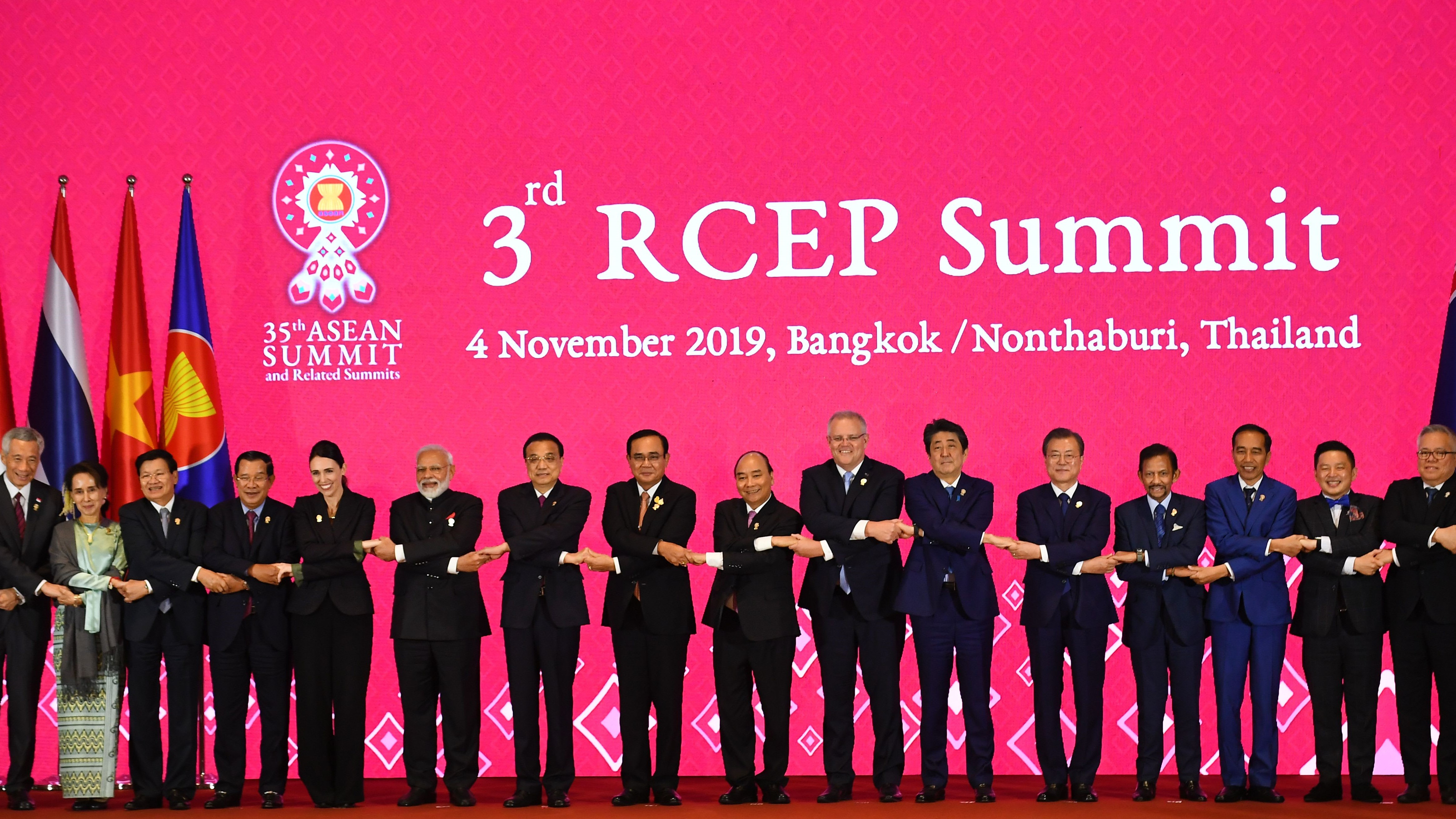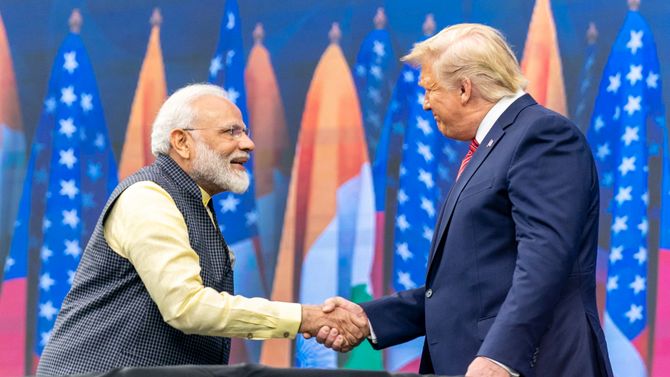At the 3rd Regional Comprehensive Economic Partnership (RCEP) summit held in Bangkok it was announced that, after a “legal scrub”, the regional FTA would proceed to the signing stage in early 2020. Fifteen of the participating countries are prepared to sign up to the agreement, with India opting out at this stage. The agreement is, therefore, between the ASEAN 10, China, Japan, Korea, Australia and New Zealand.
The texts and schedules of the agreement have not made public and will not be available until the signing, making critical analysis and a realistic assessment of the impact RCEP will have, hard at this stage.
However, after seven years and more than 20 rounds of negotiation, and with 20 chapters (see footnote) covering a wide range of trade related topics, expectations ought to be high that RCEP could stimulate growth in trade and a deepening of the economic relationship between the various parties.
Optimistically, RCEP could promote rules-based trade within the region
An optimistic view would be that RCEP is a valiant attempt to promote intra-regional economic engagement within a framework of rules. But the outcomes of the agreement in implementation will ultimately determine whether history considers RCEP to be a success or failure. One potential outcome could be that RCEP helps successfully bind a compliant China into a regional, rule-based trading system producing more equitable and deeper trade, preserving national autonomy and the diversity of value systems. If this is the case, RCEP could help promote growth through lowering trade friction and therefore allocating regional resources more efficiently. It could encourage the development of regional supply-chains, stimulate innovation by protecting intellectual property and encourage regional trade in services and the digital economy.
Or it could accelerate China’s growing dominance of Asia
Alternatively, RCEP could be a factor in accelerating the Sinification of Asia. If the rules in the agreement are not stringent enough, the process for dispute settlement not robust enough and the incentives for compliance not strong enough, RCEP could allow the larger and more mercantilist economies to benefit the most from the agreement and intra-regional trade. The countries involved cover the entire spectrum of scale and economic development (from Australia and Japan to Laos and Cambodia) with China making up more than half the GDP of the entire group. China is already the largest trading partner for most countries in RCEP. The agreement could end up dragging them even further into China’s sphere of influence and give China significant negotiating leverage over other signatories which include some of the USA’s closest allies and strategic partners.
Or RCEP could have a very modest impact
There is also the potential for the whole project to prove something of a disappointment. The counterparties to the agreement are already deeply entwined by trade and, in addition to the ASEAN agreements there is an inter-connecting network of bilateral FTAs between most of the signatories to RCEP. To have a meaningful impact on trade volumes or the benefits of trade RCEP will have to go well beyond the scope of the existing agreements.
The participants in RCEP are already deeply entwined by trade, so RCEP aims to move the relationship towards a single market.
The parties to the agreement already have an inter-connecting web of bilateral FTAs. RCEP is supposed to build on these to deepen their economic ties.
ASEAN already has FTAs with China, Korea, Japan, Australia and NZ. China has FTAs with Australia and Korea in addition to the one with ASEAN. Australia has FTAs with all the RCEP parties. The value of RCEP, therefore, lies in the potential to go beyond the existing network of FTAs that already bind the various countries together economically. For RCEP to be deemed a success, it needs to demonstrate that is can deepen the current trading and economic relationship, perhaps helping to avoid disputes such as the current Japan – Korea stand-off.
As a result of geography, natural trade patterns and existing trade agreements the East Asian regional economy is already highly inter-twined and trade, relative to GDP, is generally high. China is Australia’s largest trading partner by some margin. About 27% of Korean exports go to China with another 7% to Hong Kong (most of which ends up in China) and more than half goes to countries in RCEP. China is Japan’s top export destination too, with Korea ranked third. For Indonesia, China and Japan rank number 1 & 2 and together account for about 25% of exports. In terms of value, RCEP members are already deeply engaged in trade and cross-border investment.
The low level of intra-ASEAN trade might suggest structural issues that limit the utility of trade agreements for member countries.
Ironically perhaps, since ASEAN is at the forefront of the RCEP initiative, intra-ASEAN trade accounts for just 25% of trade for ASEAN member countries on average. ASEAN countries already trade more with the other RCEP countries than they do with each other. This contrasts with the EU where intra-EU trade accounts for on average over 60% of total trade. It is possible that this low level of intra-ASEAN trade is demonstrative of structural issues with ASEAN economies that limit the utility of trade deals in promoting greater integration, perhaps due to their domination by SMEs that tend to be domestically orientated.
Could the quality of the trading relationship and its equity be improved, and integration taken to the next level?
Without the text it is impossible to say.
Economists tend to equate the quantity of trade (in Dollars or Tons) with its benefit. Given the quantity of trade that already exists between the RCEP parties, there could be scope for disappointment if this is to be the measure of success. What RCEP could potentially achieve, however, is an improvement in the quality and equity of the trading relationships. This will depend on a number of factors: How will state subsidies be treated? Will China’s SOEs be given free reign or will their activities be circumscribed? What role will be tolerated for export oriented industrial policy? Does the treaty have anything meaningful to say on exchange rate policy or intellectual property protection? And, most importantly, how will the rules be enforced? Depending on the text of the agreement and therefore the answer to these questions, RCEP could represent a big step towards putting regional trade on a more sustainable footing, or it could facilitate further domination of regional trade by China and its SOEs.
The domination of RCEP by China carries risks for some and opportunities for Beijing
Even if India had not pulled out of the agreement, China would be the hegemonic economy within a trading bloc which has the potential to morph into a single market.
As things stand, with India not involved, China’s USD 13 trillion economy represents about 55% of the total of countries involved in RCEP. For context, Germany’s hegemonic position within the EU has been achieved with about a 20% share of the EU’s GDP. The UK, France and Germany combined account for about the same share of the EU economy as China will have in RCEP. The analogy with the EU may well be apt. RCEP negotiations have been ongoing for seven year and so the expectation ought to be for an agreement that takes the participants much closer to the concept of a single market. Remember, the EU, that is now almost a super-state, began life as a Coal and steel community with the idea of containing Germany.
China’s manufacturing dominance is particularly stark
In terms of manufacturing prowess, China will be even more dominant. According to the World Bank, Chinese manufacturing value added stood at USD 4 trillion in 2018, four times its nearest RCEP rival – Japan at USD 1 trillion – and nine times larger than Korea at USD 450bn. Will China’s economic dominance of the bloc translate into the Sinification of standards, rules and compliance or is the infrastructure around RCEP robust enough to enforce a more globally consistent rules-based system? Without the details we can only guess, but current trends are for China to become increasing inter-twined with the regional economy and China makes no secret of its desire to become more influential in setting the rules of globalization.
But China is not alone in pursuing a mercantilist approach to trade
China, Korea and Japan have each run perennial trade surpluses since the 1990s. This has been a function of industrial and macro-economic policy which reflect a mercantilist approach to trade. With three industrial super-powers accounting for 75% or more of the GDP of RCEP, all with a mercantilist mind-set, do the weaker economies, with aspirations to emulate the rise in living standards the North Asian three have enjoyed, stand a chance of benefitting from RCEP? India has clearly decided the answer is no, although for seven years it appears they were willing to give it a chance. ASEAN instigated the negotiations; one can only hope they are not to be hoist by their own petard.
North Asia’s MNCs are best equipped to benefit from international access
China, Korea and Japan are home to some of the largest corporations in the world – in large part the product of industrial policy. In the case of China, many of the largest companies best equipped to benefit from international markets are SOEs enjoying the unlimited backing of the Party. These MNCs have demonstrated their ability to capitalize on trade opportunities in a way smaller companies cannot which could lead to a very lopsided distribution of the gains from trade.
Is RCEP a tool that China hopes to use to promote its interests in the region?
China’s accession to the WTO in 2001, far from facilitating a move towards a market, liberal economy has helped facilitate the perpetuation of Communist Party rule and enabled China to exploit international markets to produce a dominant manufacturing and economic capability. RCEP could be thought of as an attempt, at a regional level, to achieve what the WTO has failed to do: to make China a compliant member of the trading community. It is a high-risk project and could back-fire if not handled carefully by RCEP members. China has demonstrated its mastery of economic state craft. It has often used economic policy to achieve geopolitical ends. Its stated geopolitical aim is “national rejuvenation”. To most that means regional domination. Is RCEP a tool China hopes to use to achieve that end? If so, would an expanded CPTPP, excluding China but with greater regional participation, not provide a better forum for setting higher standard rules of trade and deepening economic cooperation?
Without the details of the agreement it is impossible to say how RCEP will change the region, if indeed it does at all. Claiming RCEP as a triumph for rules-based trade is as premature as labeling India’s absences an historic blunder. What this month’s announcement does highlight is the fact that the region faces a gargantuan challenge in promoting free and fair trade along market driven lines when the regional economic hegemon is a non-market economy.
Footnote: RCEP Chapter Titles
Chapters on: 1) Initial Provisions and General Definitions; 2) Trade in Goods; 3) Rules of Origin, including Annex on Product Specific Rules; 4) Customs Procedures and Trade Facilitation; 5) Sanitary and Phytosanitary Measures; 6) Standards, Technical Regulations and Conformity Assessment Procedures; 7) Trade Remedies; 8) Trade in Services, including Annexes on Financial Services, Telecommunication Services, and Professional Services; 9) Movement of Natural Persons; 10) Investment; 11) Intellectual Property; 12) Electronic Commerce; 13) Competition; 14) Small and Medium Enterprises; 15) Economic and Technical Cooperation; 16) Government Procurement; 17) General Provisions and Exceptions; 18) Institutional Provisions; 19) Dispute Settlement; and 20) Final Provisions.





